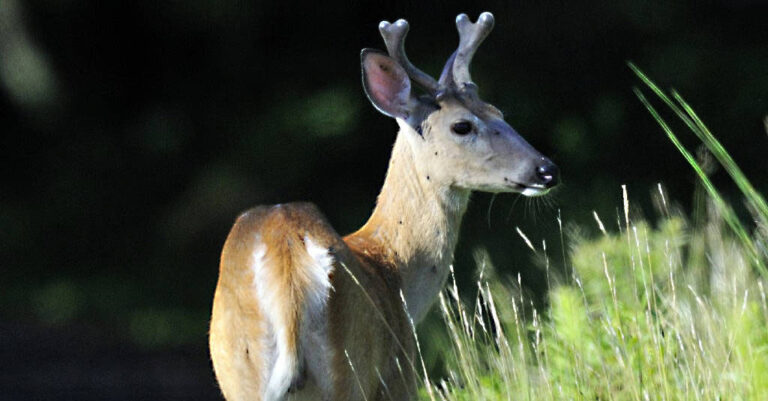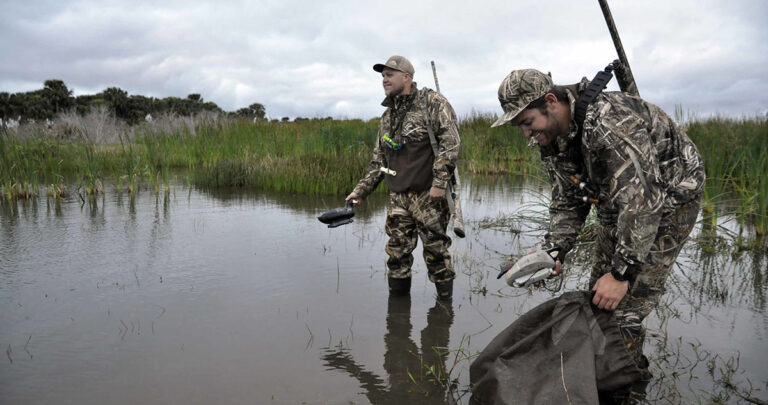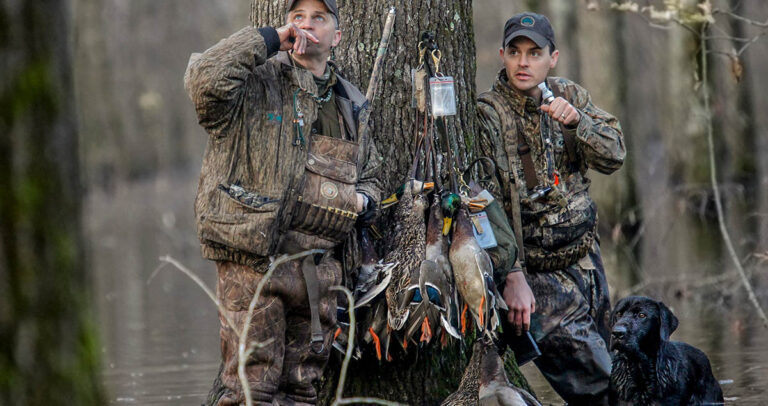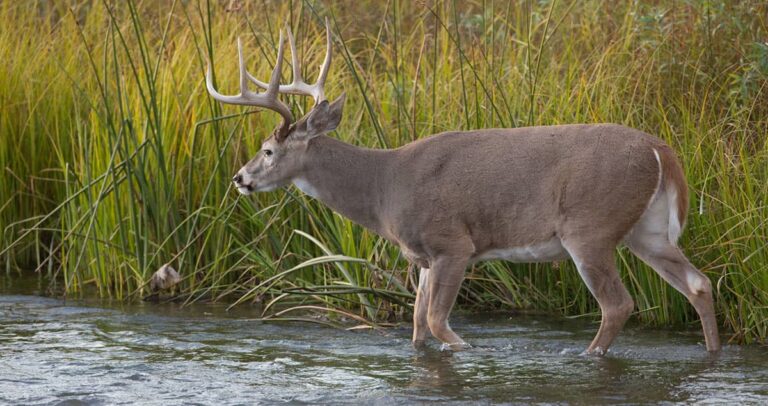What Do Deer Eat in Georgia? Here’s a Breakdown of Their Natural Diet
Wondering what deer eat in Georgia and other southern states? You’ve come to the right place.
Unfortunately, not all of us have access to those big, lush food plots like you see on your favorite outdoor television show.
Not that there’s anything wrong with food plots. But if you’re like me and hunt public land or you hunt private land where food plots are not an option, then you have to rely on finding what native vegetation the deer are keying in on at any given point during the season.
Most hunters know to look for soft mast like persimmons or muscadines, or hard mast like white and red oak acorns. However, those foods are not available on every property and, even when they are, it’s often for a fairly short window of time.
As food sources change, so do deer patterns, so you have to be able to adapt and change with them.
Unfortunately, there is no way we can cover all the different potential food sources of white-tailed deer in Georgia in one article. But what I can do is cover the basic types of foods southern deer prefer to eat, and when they typically key in on each type of food.
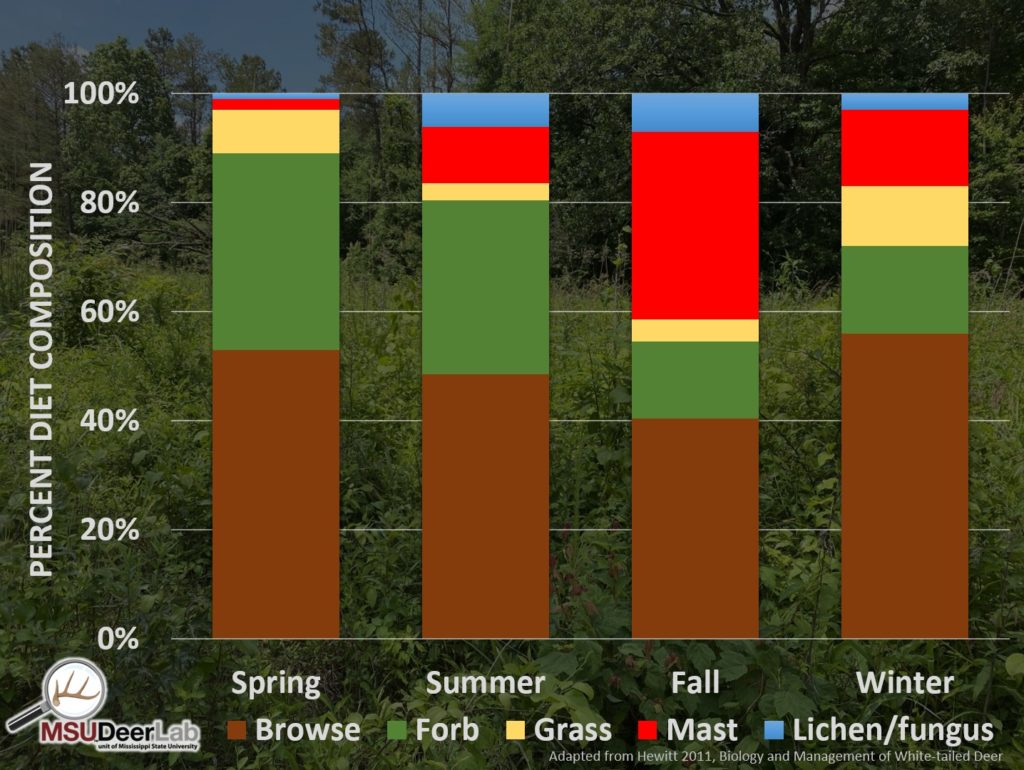
As you can see in this graph produced by the Mississippi State University Deer Lab, a deer’s diet changes throughout the year based on food availability.
Some things like lichen/fungus and grasses make up just a small portion of their diet year-round. Mast, like acorns, persimmons, crabapples, plums, and others are fed on year-round, but are an a major part of a deer’s fall diet, and winter to a lesser extent.
Deer Eat Forbs
What likely jumped out to you from this graph is the importance of forbs and browse to a southern deer’s diet all year long. Forbs are an extremely part of a deer’s spring and summer diet when nutritional demands are at their highest.
Does are lactating, fawns are growing, and bucks are developing their antlers, and forbs can provide the necessary crude protein and minerals needed for maximum development.
Some of the forbs (broadleaf “weeds”) that southern deer prefer are pokeweed, ragweed, beggars lice, wild lettuce, and partridge pea.
Browse is Important
Browse is an often-overlooked component of a deer’s diet all year, but is especially important in the winter when forbs aren’t as readily available. Browse is defined as the foliage, twigs and buds of woody plants such as trees and shrubs.
Preferred southern tree species are black gum, maples, dogwood, elm, and green ash. They will certainly eat other species too, however, if preferred vegetation isn’t readily available.
Aside from browsing trees, deer will readily eat the leaves and stems of many vines and shrubs as well. That includes vines like greenbrier, trumpet creeper, and even poison ivy, as well as brambles like blackberry and dewberry. Preferred shrub species includes American beautyberry, elderberry, strawberry bush, and huckleberries.
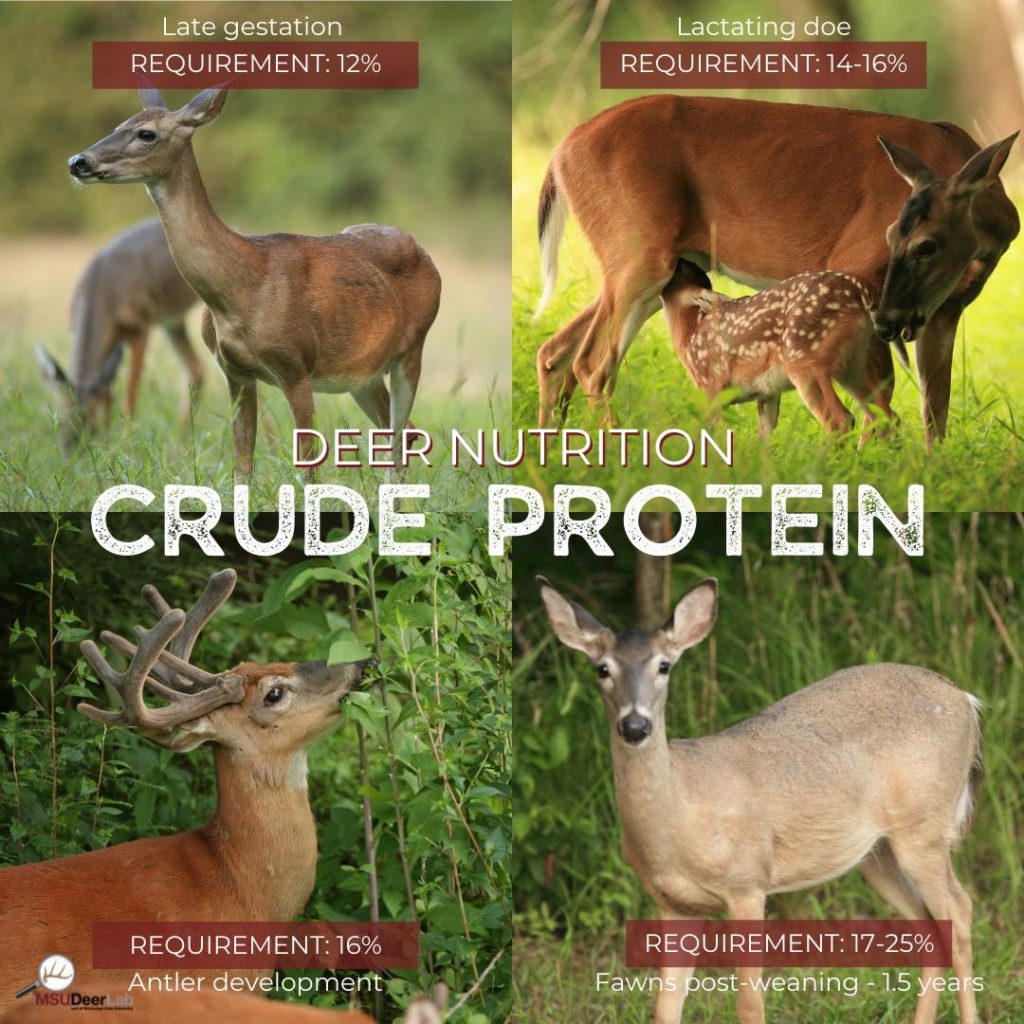
Knowing what deer eat in Georgia and other southern states is important for any deer hunter. Not only will it make you a better woodsman, but it can improve your odds of success when you’re scouting for potential stand locations.
I’ll wrap this article up with five of the most common native deer foods that every Georgia hunter should know.
5 Native Plants Every Hunter Should Know
These are five plants that you are likely to find anywhere in the South and all are preferred whitetail food sources.
Next time you’re out scouting your favorite hunting property, look for these five plants and assess how heavily they are being browsed. It might just lead you to an overlooked stand location to fill one of those buck tags in your pocket.
1. Greenbrier
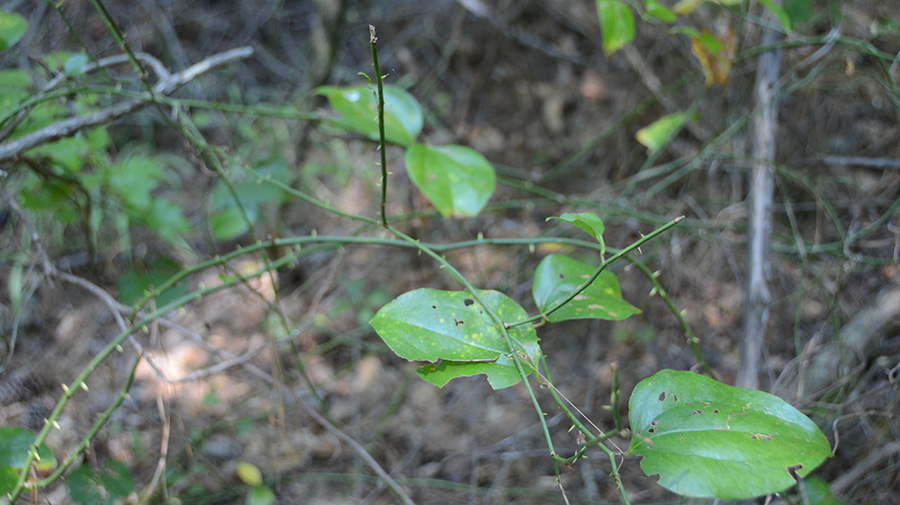
If you’ve spend much time in the Georgia woods, you’ve probably come across greenbrier. In fact, you’ve probably cursed it as you pulled the thorns out of your pants and leg. There are actually 14 different species of greenbrier in the southeast, so they can vary in the looks of the leaves and the stems (some are green, some are woody). Most have thorns.
Most importantly, though, greenbrier is a preferred browse species for white-tailed deer. Deer will readily browse the leaves and the stems of the plant, as seen in the photo above. Since some species of greenbrier are evergreen, keeping leaves throughout the winter, they can be a great late-season food source to watch.
2. Brambles
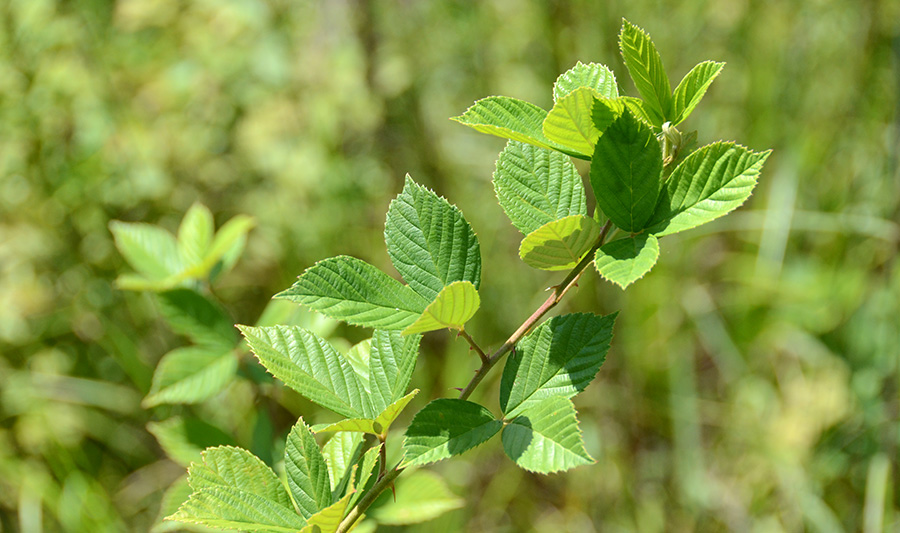
You may not know the term “brambles,” but you undoubtedly know the plants they refer to — blackberry and dewberry. Growing in just about every fallow field and thinned pine stand in Georgia, chances are you’ve encountered brambles in the field.
Like greenbrier, it may have resulted in a painful experience! Hopefully you’ve taken the time to enjoy the fruits of these plants, as well. While deer will readily consume the fruit, they will also browse the leaves and stems of brambles, as well. Don’t overlook this readily available whitetail food source this fall.
3. Muscadine
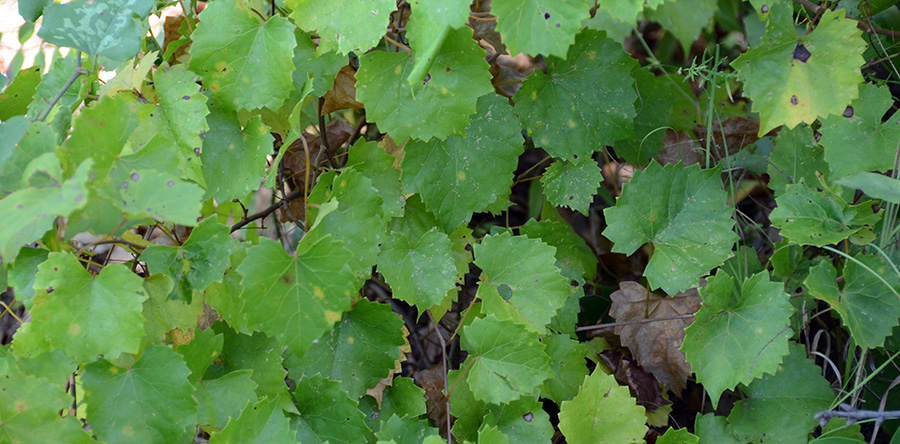
We all know deer love muscadine grapes and when you find them hitting the ground in the early deer season, you’ve probably found a good stand location. But what you may not have realized is that the muscadine leaves are a preferred forage for whitetails.
Those delicious fruit are only available for a very short window of time, but the leaves will provide a food sources throughout the summer and fall. So even after the last grape has been consumed, don’t overlook that muscadine patch as a potential stand site.
4. Ragweed
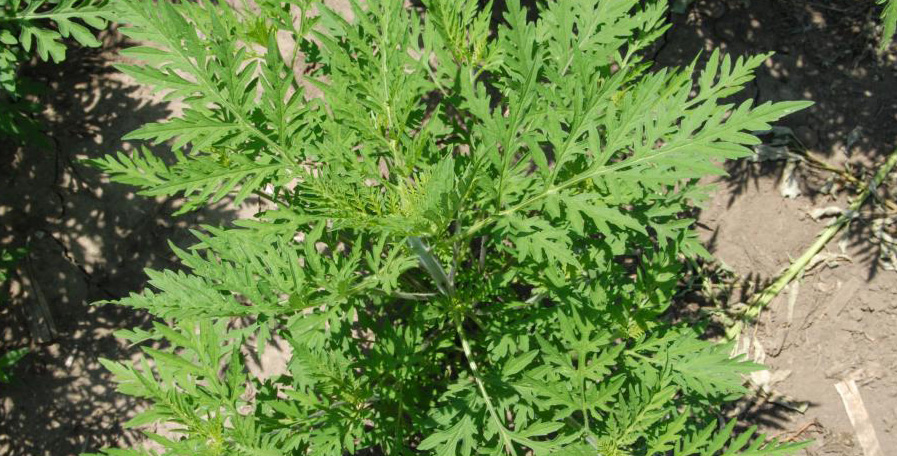
If you have allergies like myself, ragweed is probably not real high on your “preferred plant” list. Ragweed pollen has probably ruined more early season hunts for me than all other factors combined, but I can’t deny that it is a fantastic deer forage (it’s great for quail and other birds, as well).
Ragweed can provide crude protein levels comparable to the best food plot species and is very palatable. The best part is, it is easily supplied with a soil disturbance and can grow in fairly poor soils.
Most of ragweed’s benefit is provided in the spring and summer before deer season opens, so it’s not likely to provide you with a great stand site, but it’s an excellent forage to have available where you hunt.
5. Poison Ivy
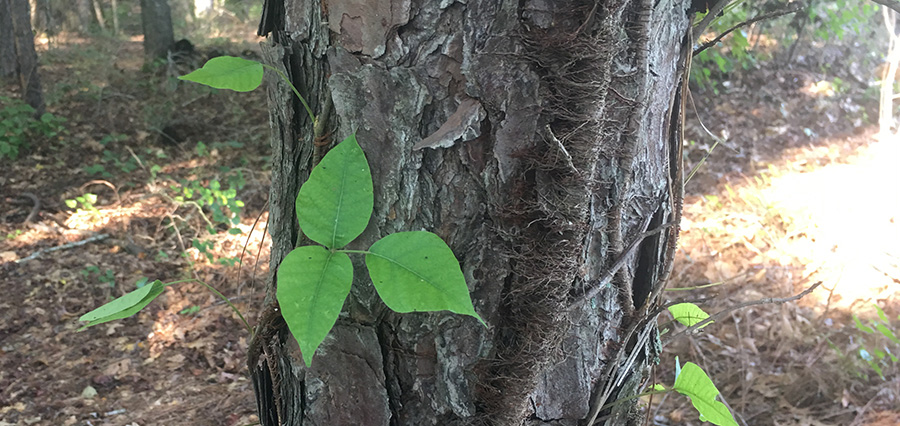
If ragweed wasn’t bad enough, I thought I would throw in another hunter favorite, poison ivy.
Believe it or not, poison ivy is a moderate to highly preferred deer forage. For reasons beyond my understanding, the urushiol oil found on poison ivy that causes so many problems for us humans, does not have a negative effect on white-tailed deer.
Be very cautious when hunting over this preferred food source!
Summary
These are just five of a very long list of potential native deer foods in Georgia. I would highly recommend picking up a plant ID book like Forest Plants of the Southeast and Their Wildlife Uses, and carrying it with you in the field while you scout.
Look for plants that are being browsed — they are easy to identify by the nipped off leaves and stems. Once located, take time to identify those plants and make a note of which ones deer seem to prefer where you hunt.
This information may prove invaluable when it comes time to look for potential stand locations. Learning which native plants deer prefer will make you a better woodsman and a better deer hunter.
Good luck this fall!

